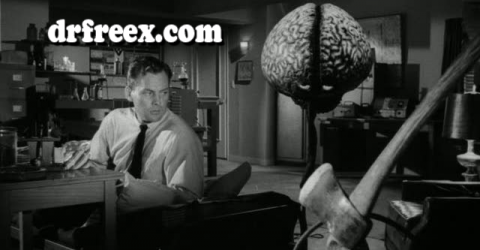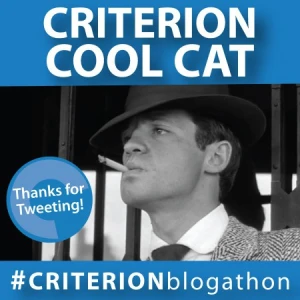Somehow, somewhere in there, I watched Eyes Wide Shut and didn’t write about it. Certainly an ignoble end to one of my more ambitious projects this year: watching all of Stanley Kubrick’s movies, in order. The reasons for this are many, and most do not have anything to do with the movie itself. The ones that do, are, primarily: I hadn’t heard good things about it, and I am not a fan of Tom Cruise.
 Well, the first image you’re going to see in Eyes Wide Shut is a nude Nicole Kidman, which should let you know what kind of a movie you are in for. For some reason, a naked woman in the opening shot for Student Teachers signals exploitation; in the opening moments of a Stanley Kubrick movie, it presages art. It probably has something to do with the lighting.
Well, the first image you’re going to see in Eyes Wide Shut is a nude Nicole Kidman, which should let you know what kind of a movie you are in for. For some reason, a naked woman in the opening shot for Student Teachers signals exploitation; in the opening moments of a Stanley Kubrick movie, it presages art. It probably has something to do with the lighting.
Cruise is successful Manhattan doctor Bill Harford and Kidman his wife, Alice. They’re preparing to go to a Christmas party held by one of Harford’s patients, a fabulously wealthy man played by another film director, Sydney Pollack. Bill and Alice, being young, beautiful people, are hit on by various sexual scavengers during the party. Afterwards, in a marijuana-fueled confrontation (Alice has that strain of pot that makes you aggressive, which I must admit is something I’ve never encountered), Alice is a little too frank about a fantasy she once had about a naval officer. This shakes Harford to his core, and in the next twelve hours, he is accosted by a recently dead patient’s daughter who claims to love him, nearly has an assignation with a prostitute, and finally ends up at a mansion in the middle of nowhere, a masked interloper in a bizarre Hellfire Club-type evening of debauchery, filled with naked women and others all similarly masked.
 It’s this gathering that forms the center of our story, and the aftermath provides the remainder of the film. Discovered and ejected from the gathering, his life apparently saved by a woman willing to sacrifice herself in his stead, Harford attempts to piece together what exactly happened. Unable to admit to his wife what he did the night before, he also finds each of the brief, unfulfilled relationships of that evening terminated and unavailable. His paranoia becomes a feverish thing, as he becomes aware of a tough-looking individual following him. Finally, in a scene that is remarkably stolid for a Kubrick film, Sydney Pollack explains everything to him, and it’s not quite as weird or evil as we or Harford suspected.
It’s this gathering that forms the center of our story, and the aftermath provides the remainder of the film. Discovered and ejected from the gathering, his life apparently saved by a woman willing to sacrifice herself in his stead, Harford attempts to piece together what exactly happened. Unable to admit to his wife what he did the night before, he also finds each of the brief, unfulfilled relationships of that evening terminated and unavailable. His paranoia becomes a feverish thing, as he becomes aware of a tough-looking individual following him. Finally, in a scene that is remarkably stolid for a Kubrick film, Sydney Pollack explains everything to him, and it’s not quite as weird or evil as we or Harford suspected.
In a fit of contrition, Harford admits everything to Alice, and the final scenes, in which the Harford take their daughter Christmas shopping, is actually a small masterpiece of acting. There is a lot of room between Bill and Alice, as they follow their child through the hectic store; their minds are obviously anywhere else than where they are, physically, at the moment. There is a note of rapprochement before the final fade, at least.
Eyes Wide Shut is taken from a novella called Traumnovelle by Arthur Schnitzler, basically, dream story. Cruise really does move through the story as if it were a dream, frequently surprised, confused, often trying to extricate himself from events unfolding around him, and when he does initiate a situation, instead of having it thrust upon him – by hurriedly putting together a disguise and catching a cab into the super-wealthy wilderness – he pays a hefty price, suddenly finding himself in the weirdest Hitchcock movie ever made.
 In all, it’s intriguing, if not especially fulfilling, watching Eyes Wide Shut unfold. The increasing unreality of Harford’s situation finally washed away in the overly-bright ultra-consumerism of a Christmas Macy’s. Seeing Cruise walk the night streets of a New York which we know – just because we know Kubrick – is really somewhere in England. The sudden, unheralded appearances of Alan Cumming and Fay Masterson. And the fact that I didn’t really mind Tom Cruise in this, at all (even if I find it dismaying that a well-to-do doctor drinks Budweiser, for God’s sake). Also, I like Nicole Kidman in eyeglasses, surprise, surprise.
In all, it’s intriguing, if not especially fulfilling, watching Eyes Wide Shut unfold. The increasing unreality of Harford’s situation finally washed away in the overly-bright ultra-consumerism of a Christmas Macy’s. Seeing Cruise walk the night streets of a New York which we know – just because we know Kubrick – is really somewhere in England. The sudden, unheralded appearances of Alan Cumming and Fay Masterson. And the fact that I didn’t really mind Tom Cruise in this, at all (even if I find it dismaying that a well-to-do doctor drinks Budweiser, for God’s sake). Also, I like Nicole Kidman in eyeglasses, surprise, surprise.
And the fact that the very last word said in the last Kubrick movie, ever, is “Fuck”… well, dark humorist and cynic that he was, I’m sure that makes Kubrick chuckle occasionally in Movie Maker Heaven.




















































